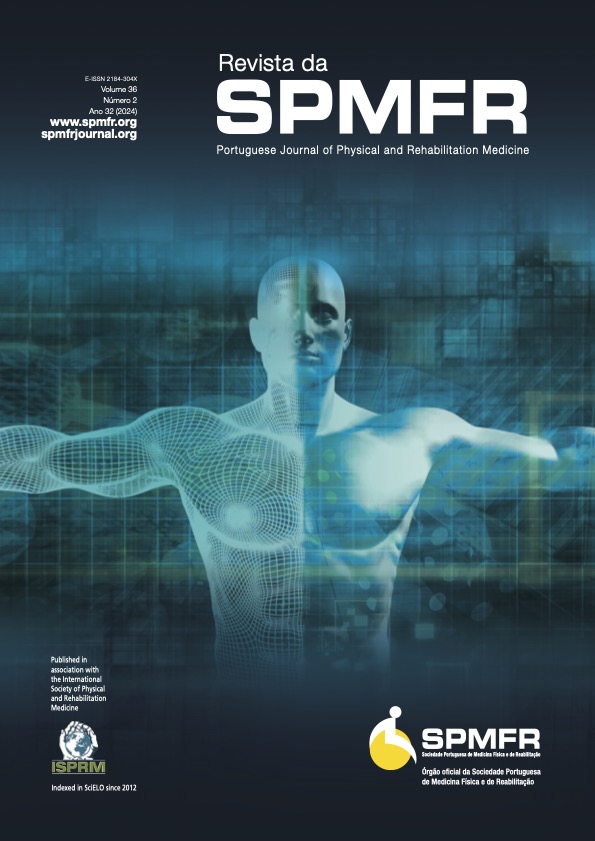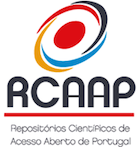Ultrasound-Guided Knee Cartilage Exploration: An Assessment Protocol
DOI:
https://doi.org/10.25759/spmfr.494Keywords:
Cartilage, Articular/diagnostic imaging, Knee Joint/diagnostic imaging, UltrasonographyAbstract
Introduction: The knee joint consists of three distinct articulations: medial and lateral femorotibial joints and the patellofemoral joint. It is composed of hyaline articular cartilage that envelops the femoral condyles, tibial plateaus, trochlear grooves, and patellar facets. Additionally, fibrocartilaginous menisci are present. Ultrasonography (US) is increasingly employed in musculoskeletal medicine for precise measurement and identification. This study aims to develop a systematic ultrasound evaluation of knee cartilage to enhance diagnostic accuracy and therapeutic guidance by recognizing the typical anatomical structure.Methods: The authors describe a stepwise protocol for ultrasound exploration of the cartilaginous components of the knee joint with a special focus on patient positioning, ultrasound probe placement, and commonly encountered ultrasound images in knee cartilage exploration. A linear probe (9-12 MHz) was used..
Results: On the anterior surface of the knee, it is possible to assess ultrasound imaging of the trochlear cartilage of the femur and the patellar cartilage, the latter partially. The patient should perform a maximum flexion of the knee to expose a greater amount of trochlear cartilage. To assess the medial meniscus, the patient should be in a supine position with the knee flexed at approximately 30o and the leg externally rotated. For evaluating the lateral meniscus, the patient should be in a supine position with the knee flexed at approximately 30o and the leg internally rotated. On the posterior surface of the knee, it is possible to assess ultrasound imaging of the posterior articular cartilage of the femoral condyles as well as the posterior horns of the menisci. The patient should perform a prone position with a complete extension of the knee.
Conclusion: In summary, the ultrasound protocol for evaluating knee cartilage is crucial due to its accessibility, cost-effectiveness, real-time imaging, and ability to measure cartilage thickness. While additional imaging may be necessary for a thorough diagnosis, due to the limitations of using US, the ultrasound protocol significantly enhances knee cartilage assessment and improves overall patient care.
Downloads
References
Standring S, Ellis H, Healy J, Johnson D, Williams A, Collins P, et al. Gray's
anatomy: the anatomical basis of clinical practice. Amsterdam: Elsevier; 2005
Özçakar L, Tunç H, Öken Ö, Ünlü Z, Durmuş B, Baysal Ö, et al. Femoral cartilage thickness measurements in healthy individuals: learning, practicing and publishing with TURK-MUSCULUS. J Back Musculoskelet Rehabil. 2014;27:117-24. doi: 10.3233/BMR-130441.
Haugen IK, Bøyesen P. Imaging modalities in hand osteoarthritis--and perspectives of conventional radiography, magnetic resonance imaging, and ultrasonography. Arthritis Res Ther. 2011;13:248. doi: 10.1186/ar3509.
Bertoli A. El cartílago hialino y la ultrasonografía: revisión de la literatura. Rev Argent Reumatol. 2015;26:22 -9. doi: 10.47196/rar.v26i4.642.
Möller B, Bonel H, Rotzetter M, Villiger PM, Ziswiler HR. Measuring finger joint cartilage by ultrasound as a promising alternative to conventional radiograph imaging. Arthritis Rheum. 2009;61:435-41. doi: 10.1002/art. 24424.
Sohn C, Gerngross H, Meyer P, Sohn G. Meniskussonographie. Aussagekraft und Treffsicherheit im Vergleich zu Arthrographie und Arthroskopie oder Operation. Fortschr Med. 1987;105:81-5.
Wakefield RJ, Gibbon WW, Emery P. The current status of ultrasonography in rheumatology. Rheumatology. 1999;38:195-8. doi: 10.1093/rheumatology/ 38.3.195.
Chew K, Stevens KJ, Wang TG, Fredericson M, Lew HL. Introduction to diagnostic musculoskeletal ultrasound: part 2: examination of the lower limb. Am J Phys Med Rehabil. 2008;87:238-48. doi: 10.1097/PHM.0b013 e31816198c2.
Finnoff JT, Smith J, Nutz DJ, Grogg BE. A musculoskeletal ultrasound course for physical medicine and rehabilitation residents. Am J Phys Med Rehabil. 2010;89:56-69. doi: 10.1097/PHM.0b013e3181c1ee69.
Cao J, Zheng B, Meng X, Lv Y, Lu H, Wang K, et al. A novel ultrasound scanning approach for evaluating femoral cartilage defects of the knee: comparison with routine magnetic resonance imaging. J Orthop Surg Res. 2018;13:178. doi: 10.1186/s13018-018-0887-x.
Buck RJ, Wyman BT, Le Graverand MP, Hudelmaier M, Wirth W, Eckstein F, et al. Osteoarthritis may not be a one-way-road of cartilage loss--comparison of spatial patterns of cartilage change between osteoarthritic and healthy knees. Osteoarthritis Cartilage. 2010;18:329-35. doi: 10.1016/j.joca.2009.11. 009.
Frobell RB, Nevitt MC, Hudelmaier M, Wirth W, Wyman BT, Benichou O, et al. Femorotibial subchondral bone area and regional cartilage thickness: a cross-sectional description in healthy reference cases and various radiographic stages of osteoarthritis in 1,003 knees from the Osteoarthritis Initiative. Arthritis Care Res. 2010;62:1612-23. doi: 10.1002/acr.20262.
Cicuttini FM, Wluka AE, Stuckey SL. Tibial and femoral cartilage changes in knee osteoarthritis. Ann Rheum Dis. 2001;60:977-80. doi: 10.1136/ ard.60.10.977.
McAlindon T, Kissin E, Nazarian L, Ranganath V, Prakash S, Taylor M, et al. American College of Rheumatology report on reasonable use of musculoskeletal ultrasonography in rheumatology clinical practice. Arthritis Care Res. 2012;64:1625-40. doi: 10.1002/acr.21836. .
Lai KL, Chiu YM. Role of ultrasonography in diagnosing gouty arthritis. J. Med. Ultrasound. 2011;19:7–13. doi: 10.1016/j.jmu.2011.01.003.
Thiele RG, Schlesinger N. Diagnosis of gout by ultrasound. Rheumatology. 2007;46:1116-21. doi: 10.1093/rheumatology/kem058.
Bjelle AO. The glycosaminoglycans of articular cartilage in calcium pyrophosphate dihydrate (CPPD) crystal deposition disease (chondrocalcinosis articularis or pyrophosphate arthropathy). Calcif Tissue Res. 1973;12:37-46. doi: 10.1007/BF02013720.
Grassi W, Meenagh G, Pascual E, Filippucci E. "Crystal clear"-sonographic assessment of gout and calcium pyrophosphate deposition disease. Semin Arthritis Rheum. 2006;36:197-202. doi: 10.1016/j.semarthrit.2006.08.001.
Grassi W, Lamanna G, Farina A, Cervini C. Sonographic imaging of normal and osteoarthritic cartilage. Semin Arthritis Rheum. 1999;28:398-403. doi: 10.1016/s0049-0172(99)80005-5.
Iagnocco A. Imaging the joint in osteoarthritis: a place for ultrasound? Best Pract Res Clin Rheumatol. 2010;24:27-38. doi: 10.1016/j.berh.2009.08.012.
Filippucci E, Iagnocco A, Meenagh G, Riente L, Delle Sedie A, Bombardieri S, et al. Ultrasound imaging for the rheumatologist. Clin Exp Rheumatol. 2006;24:1-5.
Lew HL, Chen CP, Wang TG, Chew KT. Introduction to musculoskeletal diagnostic ultrasound: examination of the upper limb. Am J Phys Med Rehabil. 2007;86:310-21. doi: 10.1097/PHM.0b013e31803839ac.
Naredo E, Uson J, Jiménez-Palop M, Martínez A, Vicente E, Brito E, et al. Ultrasound-detected musculoskeletal urate crystal deposition: which joints and what findings should be assessed for diagnosing gout? Ann Rheum Dis. 2014;73:1522-8. doi: 10.1136/annrheumdis-2013-203487.
Downloads
Published
How to Cite
Issue
Section
License
Copyright (c) 2024 Revista da Sociedade Portuguesa de Medicina Física e de Reabilitação

This work is licensed under a Creative Commons Attribution-NonCommercial-NoDerivatives 4.0 International License.
Copyright statement
Authors must also submit a copyright statement (as seen below) on article submission.
To the Editor-in-chief of the SPMFR Journal:
The below signed author(s) hereby state that the article
________________________________________ (ref. MFR_________) is
an original unpublished work and all facts stated are a product of the author(s) investigation. This article does not violate any copyright laws or privacy statements. The author(s) also hereby confirm that there is no conflict of interest's issues in this article.
By submitting this article the author(s) agree that after publication all copyrights belong to the SPMFR Journal.
Signed by all authors
Date:
Names (capital letters):
Signatures:
The SPMFR Journal’s contents are follow a Creative Commons licence. After publication the authors can hand out the articles as long as the SPMFR Journal is credited.



